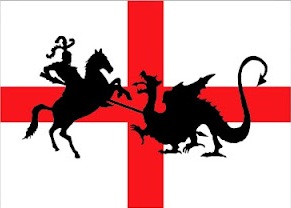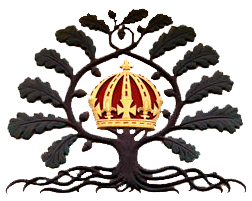A Reader Sends This Article
 Embryo Parson Posted on
Embryo Parson Posted on  Saturday, September 8, 2012 at 07:13PM
Saturday, September 8, 2012 at 07:13PM Patristic Soteriology: Three Trajectories (Journal of the Evangelical Theological Society)
I would urge my readers to take the time to read this 21-page article. The author is Donald Fairbairn, a professor of historical theology at Erskine Theological Seminary in South Carolina, who sets forth the argument that what we see in the soteriologies of Western and Eastern churches is not two, but three "trajectories." Based on the work of the noted Protestant historical theologian Adolf von Harnack and others, it is commonly held that there are two major soteriological patterns, "a juridical or legal pattern (strongly represented in the Western Church) that focused on forgiveness of sins, and a more Eastern pattern that saw salvation as participation in God or deification." Harnack argued, and I would largely agree with him, that:
the Western pattern . . . followed the biblical depiction of salvation by focusing on the inspiring character of Christ’s human life, the need for atonement from sin, the fact of human justification, and the coming of God’s judgment. . . . In contrast (to the Eastern participatory and mystical trajectory), he writes that Western Christianity was from the start more biblical and practical, as well as more ecclesiastical, because of its less speculative bent. Harnack affirms: “To this is attributed the fact that the West did not fix its attention above all on deification nor, in consequence, on asceticism, but kept real life more distinctly in view.” (Emphasis mine.)
Of the Eastern Church, Harnack writes:
The salvation presented in (Eastern) Christianity consists in the redemption of the human race from the state of mortality and the sin involved in it, that men might attain divine life, i.e., the everlasting contemplation of God, this redemption having already been consummated in the incarnation of the Son of God and being conferred on men by their close union with him: Christianity is the religion which delivers from death and leads to the contemplation of God.
It is, in fact, this trajectory which took hold in the East:
If one turns to the East, it seems to me that what I am calling the mystical trajectory was the one that gained preeminence during the Byzantine period. The emphases of Origen and Gregory of Nyssa were echoed prominently in the writings of Pseudo-Dionysius early in the sixth century. Later, Maximus the Confessor (ca. 580–662) launched an extensive critique of Origen’s cosmology, allegedly solving once-for-all the problems inherent in it, but in my opinion he did not significantly depart from the overall vision of Origen and Gregory of Nyssa. This trajectory may be traced further through Gregory Palamas (ca. 1269–1359), who crystallized the distinction between God’s essence (in which we do not share) and his energies (in which we do share through salvation). With Palamas the Eastern Orthodox Church was locked onto a trajectory in which salvation consists more of participation in God’s qualities, his energies, rather than participation in a relationship.
Read almost any standard Orthodox theology text today, and you will see that this is how the Orthodox view of soteriology is stated, its indebtedness to Origenist (and hence Neoplatonist) theologians such as Gregory, Maximus and Palamas frankly noted.
However, Fairbairn argues there is a separate soteriological trajectory in Eastern Christian thought, one he describes as personalist and relational, which is rooted in the writings of Irenaeus and Cyril of Alexandria. That trajectory unfortunately did not triumph in the East, but it is arguably one that could harmonize well not only with the juridical trajectory of the West, but also with the personalist and relationalist theologies of Evangelicalism.
It's an interesting thesis. Whether or not it stands a chance of bearing any ecumenical fruit is another question. From a Western "juridical" perspective, personalism and relationalism are theologies that are complementary to the juridical pattern. But Orthodoxy is so locked into its theosis/works soteriology and so dead set against "the West" that any attempt on its part to find some common ground here seems unlikely.





Reader Comments (3)
EP, just a short note to say thank you for your articles on the Eastern churches. They are eye-opening, and most valuable.
Thanks for your kind words, Fr. du Barry. It's not my intent to "pick" on the Orthodox Church, contrary to what a certain Orthodox priest argues here and elsewhere. But I do want to communicate here on this blog why I think potential converts to Orthodoxy should reconsider. Or at least be able to go into it with eyes wide open.
Orthodoxy developed in the late Roman Empire where the emperor had a connection with God or one of the Gods. Constantine prior to being a christian worshiped Sol Invictius and saw himself as the Representative of that God and later of the Christian God, remember the vision of Constantine. Emperors were God's Representative on Earth so a deification process of the Emperor means that he will represent God's will. Byzantines thought bad emperors not representing God, so Plagues, Earthquakes resulted read Procopius's Secret History. Emperors toward there later years and Empress sometimes gave up the throne and went into a monastery or nunnery. Basil the 2nd didn't marry and gave up sex. Also, upper-class people in their middle years went also to the monastery or nunnery. This to live a life without the worldly comforts and obtain further along the deification process.